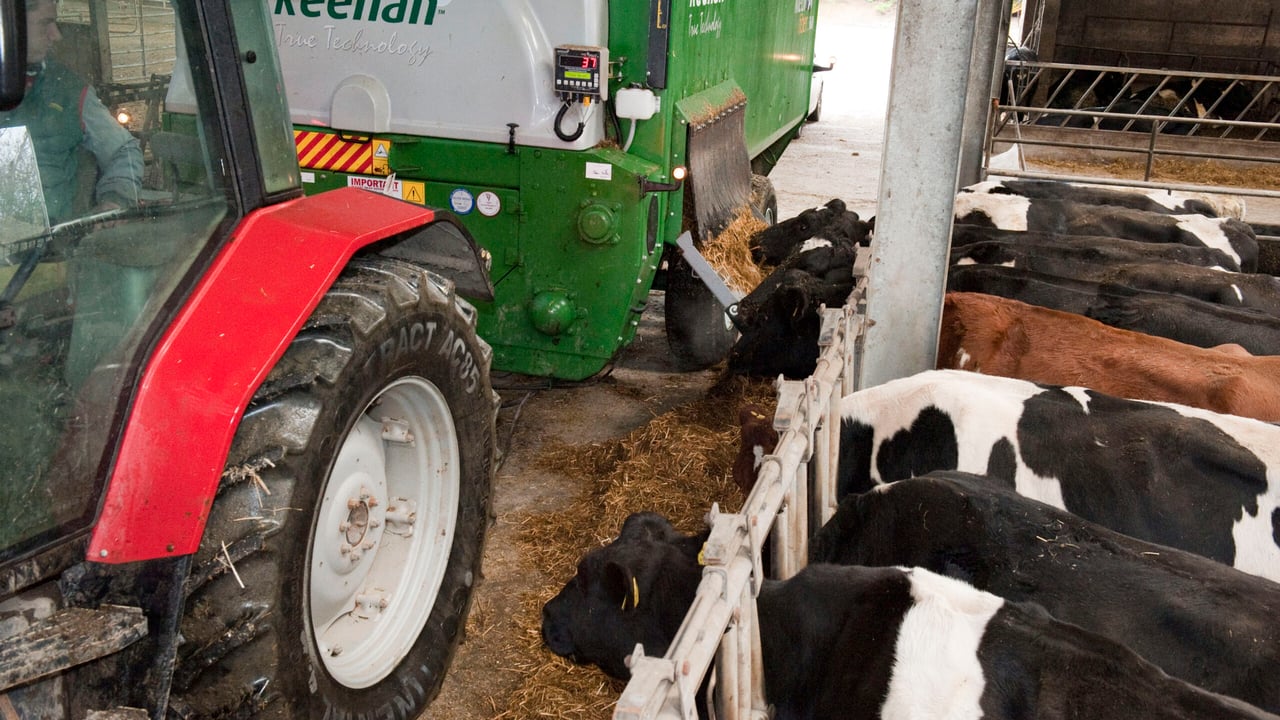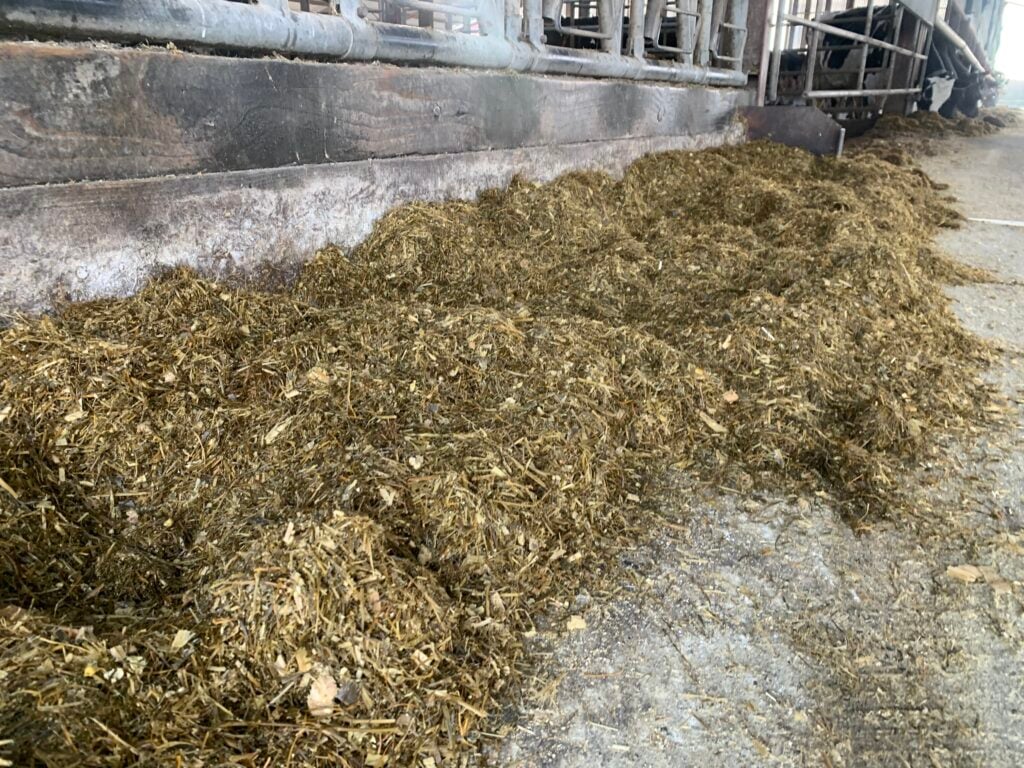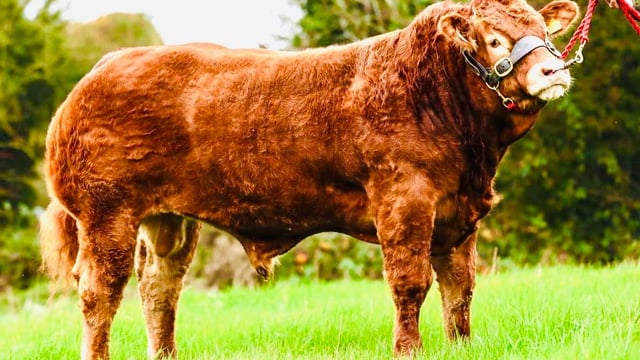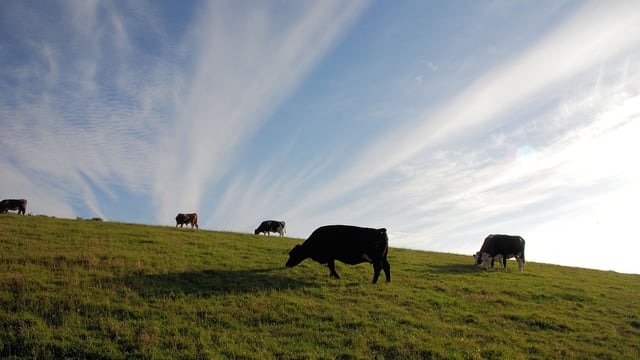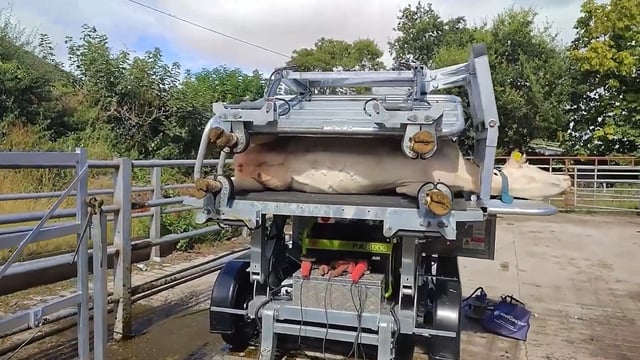Is TMR a suitable buffer feed for your herd this winter?
As the winter closes in, farmers must be looking at the best feeding options for their herd to ensure optimum diet requirements are met.
Farmers should have fodder budgets filled out at this stage, and be aware of how much feed is needed versus how much is in the yard.
Many farmers across the country have adopted the practice of using total mixed rations (TMR) to ensure they are achieving the optimum feed efficiency levels.
TMR can be a blend of silage, hay, maize, straw, grains, concentrates, as well as minerals, making it a typically more expensive system then grass silage alone.
Buffer feeding
As grass availability tightens up towards the back end of the season, many farmers will choose to buffer feed the herd.
Buffer feeding is said to reduce milk solids as its main role is to substitute grass, which is generally a high quality feed.
In general, forages such as TMR or silage have high substitution rates, which in turn present poor milk yields, as grass intake is being reduced by approximately 0.9kg DM for every 1.0kg DM of silage fed.
A similar response can usually be seen when feeding concentrates, however they displace grazed grass at a lesser rate.
On the other hand, studies have shown that buffer feeding with TMR in high stocking rate scenarios has increased milk solids due to increased dry matter intake (DMI), especially towards the back end of the year when high quality grass is not available ad-lib.
Dry period
We can all agree nothing beats the milk our grass-fed cows produce, especially for fat and protein production, but TMR can lead to great balances within the diet when herds are trying to hit weight targets.
This is because all dietary components are included in a single mixture, which aids in the facilitation of rumen nitrogen and carbohydrate resources.
This in turn optimises microbial growth in providing fibre and non-fibre ration components, and minimises fluctuations in rumen pH, promoting healthy rumen conditions.
TMR provides greater DMI and therefore increases energy intakes, which can lead to greater weight gains and improved BCS goals.
TMR preparation
However the advantages of TMR feeding are dependent on proper diet preparation.
A farmer must plan what feed sources will go into the mix, and ideally weigh each source when adding them to the mix.
It is also important to monitor the mixing time, as too long will reduce particle size of materials such as silage, and negatively affects usable fibre.
Another consideration farmers must take into account when formulating a mix is that winter diets are often planned on a DM basis while TMR is typically measured by weight, therefore it is important to convert all materials accurately.
When feeding TMR, cows should be separated into feeding groups depending on their dietary requirements, while bearing in mind that mixing for small groups may result in unbalanced mixes.
Feed passages should also be cleared of old feed, which can be reused in the mix but at no more than 5% of the total amount fed.

